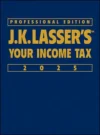Avoiding the 10% Early Distribution Penalty from Retirement Plans and IRAs
Usually, distributions from a qualified retirement plan and IRAs before age 59½ are subject to a 10% excise tax, referred to as the early distribution penalty. The Tax Code has a long list of exemptions from this penalty. And SECURE Act 2.0 added several others. The following is a list of exemptions. Note that for some, there are limitations. And some are limited to qualified retirement plans while others are limited to IRAs. Remember, too, that while withdrawals are exempt from the 10% penalty, they are still includible in gross income unless there is a further exemption for this purpose.
Health-related exceptions
- Death (after the death of the participant or IRA owner).
- You must be able to show you are unable to engage in substantial gainful activity.
- Health insurance. This applies to paying premiums while unemployed, but is limited to IRAs.
- Long-term care contracts. Distributions up to $2,500 per year can be made to pay premiums on qualified long-term care contracts. This is limited to qualified retirement plans and won’t be effective until December 29, 2025.
- Medical costs. This is limited to unreimbursed medical expenses exceeding 7.5% of adjusted gross income.
- Terminal illness. This applies to distributions after December 31, 2022.
Family-related exceptions
- Birth and adoption expenses. This is limited to $5,000. The distribution can be repaid, but only within a 3-year period.
- Distributions incident to divorce. This applies to distributions from the account owner to the former spouse. It is limited to IRAs.
- Domestic abuse victims. The distribution is limited to the lesser of $10,000, indexed for inflation, or 50% of the account balance. Victims can self-certify that they qualify for this exception. This does not become effective until after December 31, 2023, meaning not until 2024. The $10,000 limit may be increased after 2024 by an inflation adjustment.
- Domestic relations order. This directs a distribution to an alternate payee. This is limited to qualified retirement plans.
- First-time homebuyers. Withdrawals are limited to $10,000. This applies only to IRAs.
- Higher education expenses. This applies only to IRAs.
Plan-related exceptions
- Permissive withdrawals by employees subject to automatic enrollment. If your employer has an automatic enrollment plan—a 401(k), a SIMPLE IRA, or other automatic enrollment plan—you can opt to reduce or eliminate the specified contribution without penalty.
- Return of excess contributions to IRAs. This applies to the excess contribution and, effective December 29, 2022, any earnings on the excess contribution.
Other exceptions
- Disaster distributions. This is limited to $22,000 and applies to distributions for disasters occurring on or after January 26, 2021.
- Emergency expenses. This exception is limited to $1,000, but only once every 3 years unless the distribution is repaid within this period. This applies to distributions made after December 31, 2023.
- IRS levy.
- Separation from service. The age at which the penalty exception applies is 55 (50 for public safety employees). The SECURE Act extended the penalty exception to private safety employees for distributions after December 29, 2022. The Act added an exception for government distributions to those with 25 years of service, regardless of age.
- Substantially equal periodic payments. The Act also extends the exception to state and local government corrections officers
Conclusion
The purpose of funding a retirement and IRA is to accumulate wealth for retirement. The early distribution penalty is designed to discourage you from tapping into these savings vehicles without a serious need. But if you do need the funds, look for an exception to the penalty to lower the tax cost of the distribution.
Sources: https://www.irs.gov/retirement-plans/plan-participant-employee/retirement-topics-tax-on-early-distributions (this chart is not up to date with SECURE Act 2.0)



